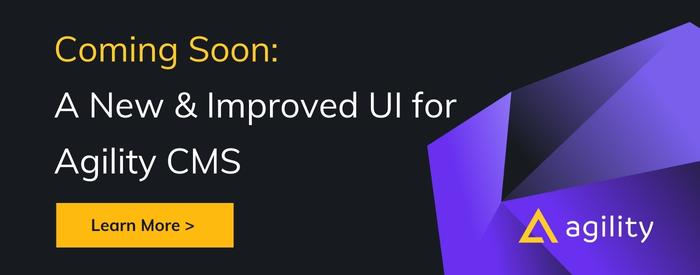Web Personalization: Its Benefits and Its Use Cases


Advertising is an expected component of daily life. Whether it is the strategically placed logo on someone's shirt, the social media ads we browse during the morning commute, or the digital ads that seem to follow us around while we browse the web, we are inundated with marketing messages daily. This inundation is not to say that we are typically annoyed by advertising. The truth is that advertisements are only bothersome when representing irrelevant ideas. However, when you make advertising and the subsequent shopping it encourages, a personalized experience relevant to your customers can result in a 19% increase in sales.
The Benefits Of Personalization
In an age where your competitor is no longer "the guy down the street" but rather "every other similar business across the globe," you must strategically build your customer base to promote brand loyalty. And personalization is the key. Personalization not only has the unique benefit of increasing sales, but it can also help businesses create a loyal following of brand ambassadors. Additional benefits include:
- Encouraging customers to complete the various stages of the sales funnel.
- Delivering better, more relevant content and recommendations to potential customers.
- Easily increasing sales to previous, current and prospective customers.
- Building stronger relationships with prospects increase your willingness to share your products or services with others.
- Increasing the ease and efficiency with which you communicate with your customers and prospects.
- Providing an improved customer experience that provides the personalized attention customers will appreciate.
Enjoy The Numerous Uses Of Personalization
The beauty of personalization is that it can be used in a multitude of fashions and across numerous digital channels. Explore the following tips for using personalization and discover a new way to personalize that goes far beyond the "Dear [Customer Name]" email headings.
Tip #1: Offer Personalized Web Content
One of the best ways to implement personalization on your site is to include relevant recommended products on each page. You can set up these recommended products by assigning categories across your site content and then dynamically implementing them on each product page. This strategy will also help you to cross-sell to site visitors via tag-based personalization.
Tag-based personalization is a digital tool automatically pulling up products with similar tags as recommended products for a particular site visitor. You can also use tag-based personalization to showcase similar products that other customers have viewed or purchased. Additionally, by closely tracking product sales conversion rates, you can strategically recommend products with a proven sales history to new customers.
In addition to recommending products on each page, you should also spend some time creating smart Call-To-Actions (CTAs). Without the right CTA, you will see a higher rate of abandoned shopping carts. However, it is essential to note that a CTA is not a one-size-fits-all solution. Instead, you can use banners that automatically update content based on the visitor's demographics and online behavioural patterns. These personalized banner ads will help you sell products relevant to that specific visitor's needs. To further fine-tune your smart CTAs and banner ads, you can implement an A/B campaign to more accurately determine what type of content appeals to each of your established audience personas.
Tip #2: Use Personalization To Upsell And Cross-Sell
Did you know that checkout pages offer the perfect opportunities for strategic upselling and cross-selling? All you need to do is offer customers the option to either upgrade to a more expensive version of your product, or purchase additional items. To achieve the desired purchase result, you will need to display the upgraded or recommended products as one of the steps in the checkout process. You can make these products more appealing by including positive reviews, discount offers, or "most popular" tags. Just like a grocery store strategically places items in a large visual display right next to the checkout lanes, you must also catch your customer's eyes with relevant must-have products before they finish checking out.
Tip #3: Profiles Offer More Insights Into Your Customers
The more details you have about your customers, the easier it will be for you to create personalized marketing messages specifically targeted to their wants, needs and likes. Give your customers a chance to tell you more about what they need during the buying journey by encouraging them to fill out a profile at their convenience. This profile could include the following types of information:
- Preferred product types;
- Frequency of need for new products (or updated products);
- Frequency of purchases;
- Preferred type of communication format, as well as frequency; and
- The demographic information will help you to create a more personalized buying experience.
Next, you should use the information gathered from your customer profiles to create segmented audience personas. These personas should include like-minded customers with similar traits and buying preferences. Finally, you should make targeted and personalized offers that will appeal to your segmented audience personas.
Tip #4: Increase Sales Through Loyalty Programs
Loyalty programs are an excellent way to use personalization to increase sales. Appealing to customers via a loyalty program is easier when you leverage the customer profiles created in Tip #3. Whether you have a brick-and-mortar location or a digital store, you can and should sync customer profiles to the loyalty program that will appeal to their established buying preferences.
Don't forget that loyalty programs are about more than simply rewarding customer purchases with discounts and free merchandise. The loyalty programs should be used to encourage customers to remain engaged with your brand by offering an enhanced customer experience. Examples include sending alerts when a product is back in stock, allowing customers to create savable product wishlists or encouraging future purchases with advance new product notifications. No matter what type of loyalty program you start, if you want to increase sales, you need to make each customer feel like they are number one.
Tip #5: Take It A Step Further With Machine Learning
Machine learning is another way to use personalization to earn extra revenue. In layman's terms, machine learning relies on user personas to deliver personalized content to readers. Each persona is associated with typical behaviours, so site visitors who exhibit certain behaviours are automatically assigned to that persona. Using this information, a digital map of product recommendations is created that is relevant to each persona. When visitors (i.e. personas) are presented with relevant product recommendations they are more likely to complete the sale, which can result in a 19% increase in total sales.

About the Author
Harmonie is the Senior Marketing Manager at Agility CMS




